Abstract
Peak expiratory flow rate (PEFR) has been recorded hourly or two-hourly from waking to sleeping in workers with respiratory symptoms who were exposed to isocyanate fumes at work. Twenty-three recordings averaging 33 days duration were recorded in 20 workers. Each worker was also admitted for bronchial provocation testing to toluene di-isocyanate (TDI) or diphenylmethane di-isocyanate (MDI) fumes or both. A final assessment of work-related asthma made from subsequent work exposure was compared with the results of bronchial provocation testing and a subjective assessment of the peak flow records. Both techniques were specific and sensitive. Physiological patterns of occupational asthma were defined from the records of PEFR. The most striking finding was the slow recovery from work-induced asthma. This commonly took several days to start and in one worker took 70 days to complete after leaving work. Several workers developed a pattern resembling fixed airways obstruction after repeated exposure at work. The consequences of these findings for the recording of symptoms of occupational asthma are discussed and recommendations are made for the recording of PEFR in workers in general.
Full text
PDF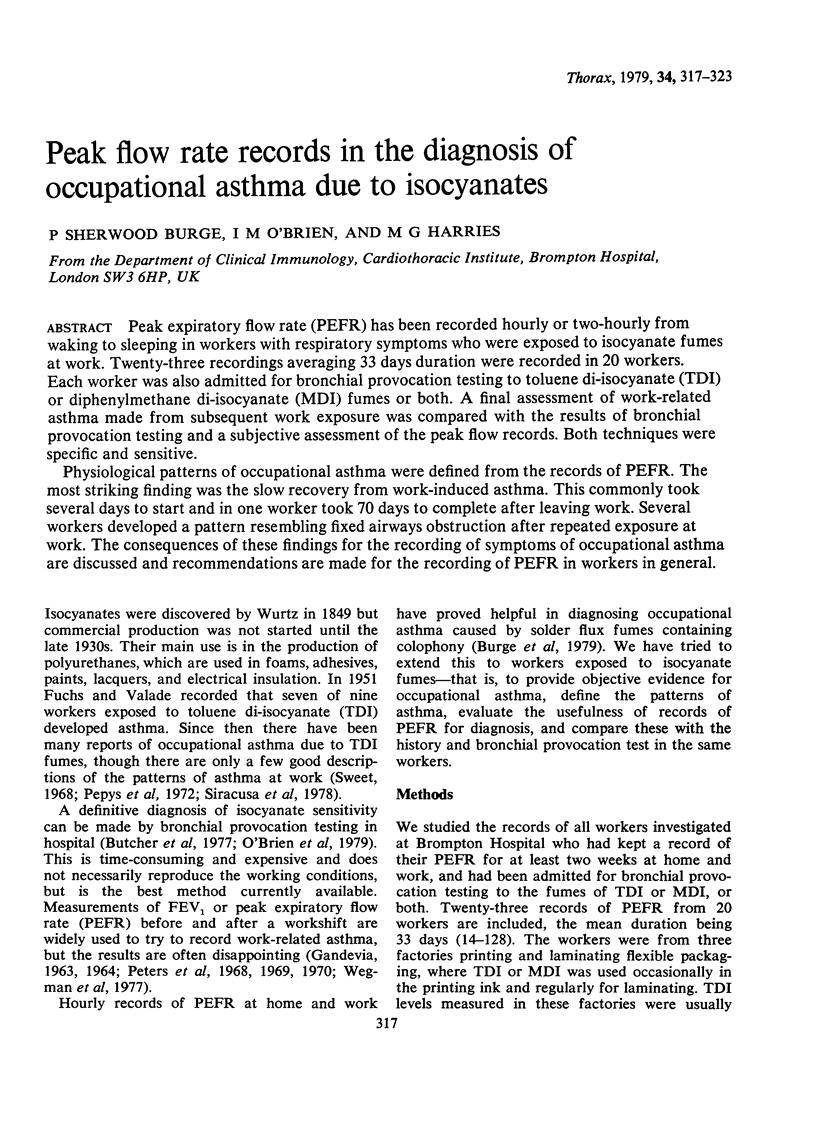
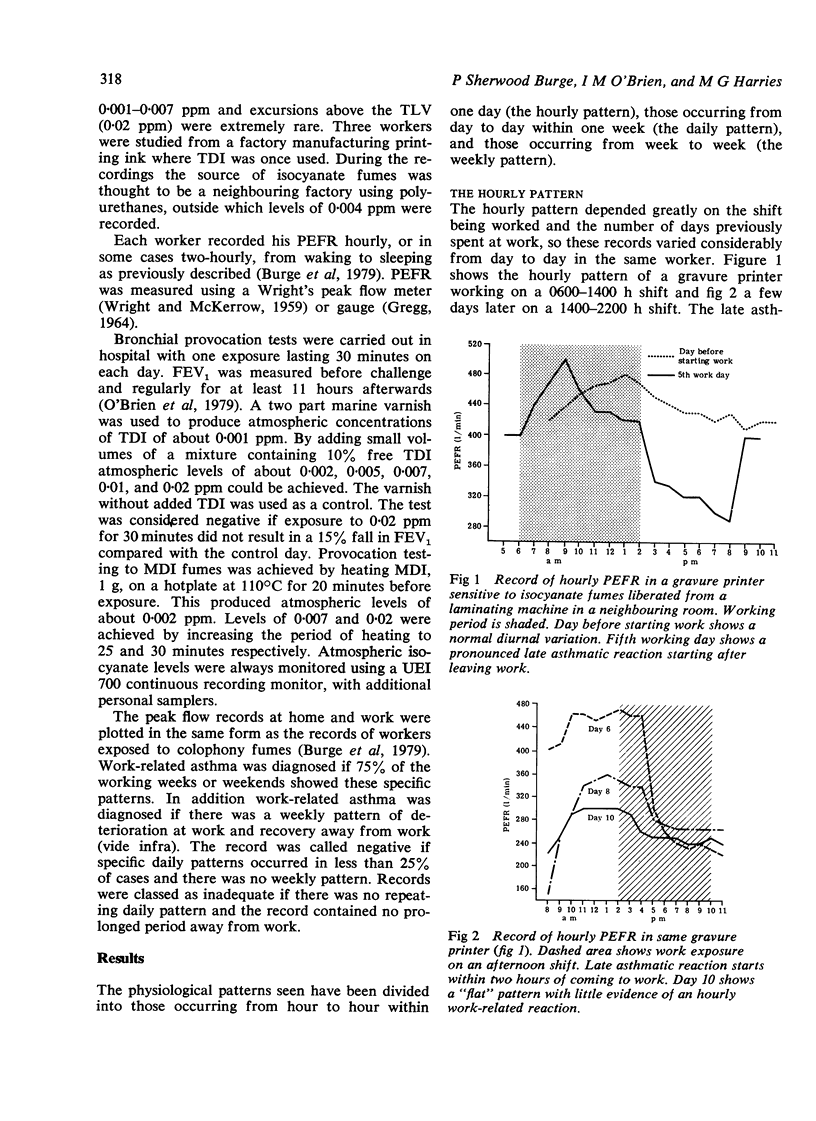
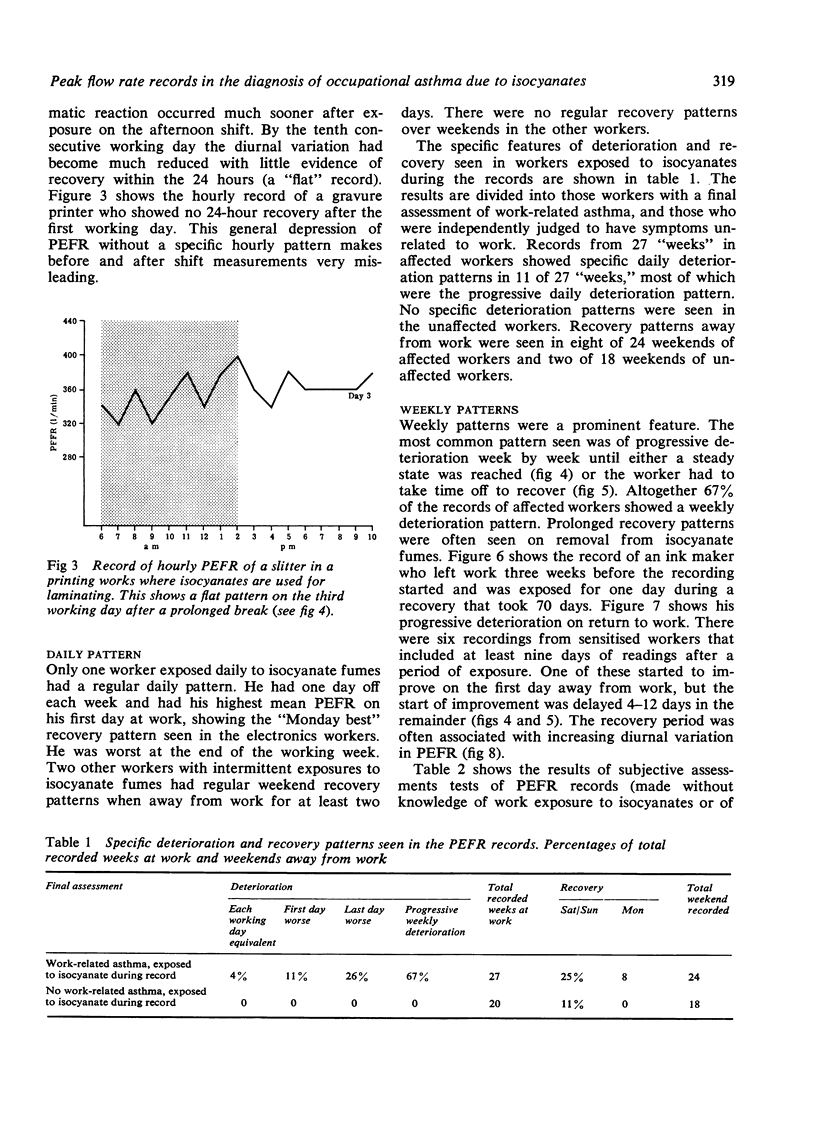
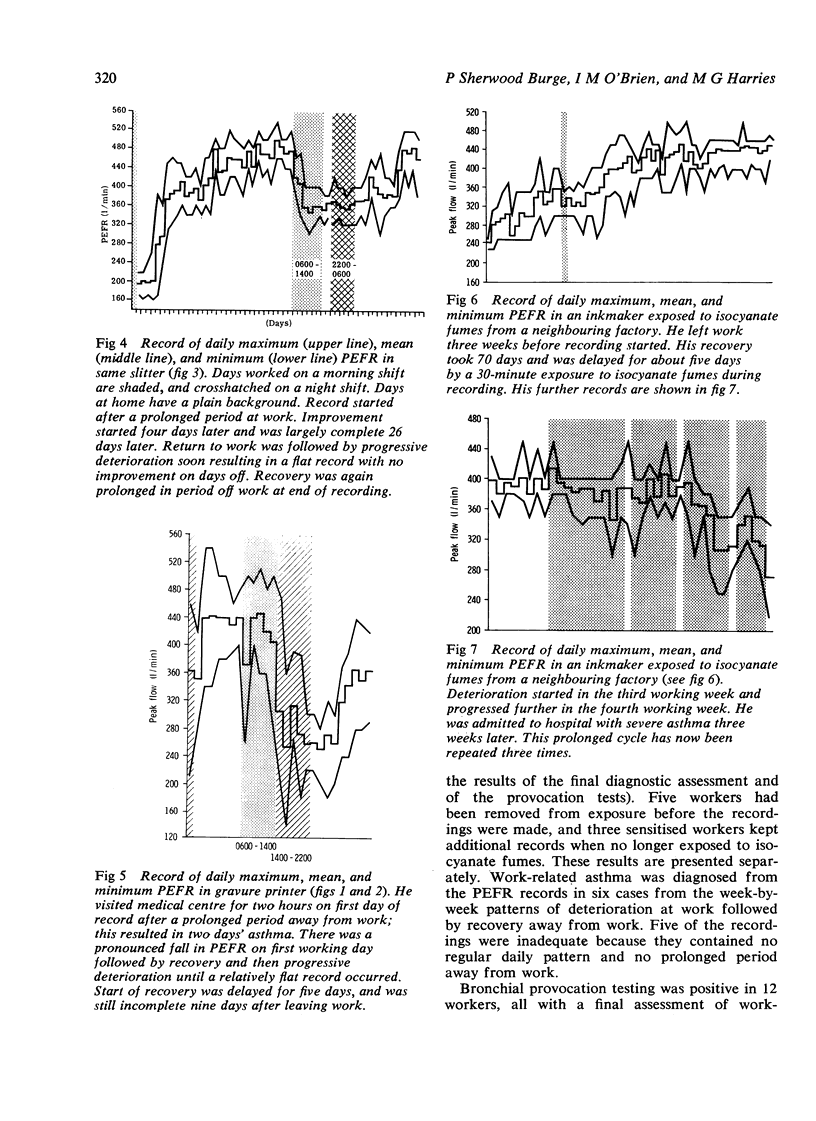
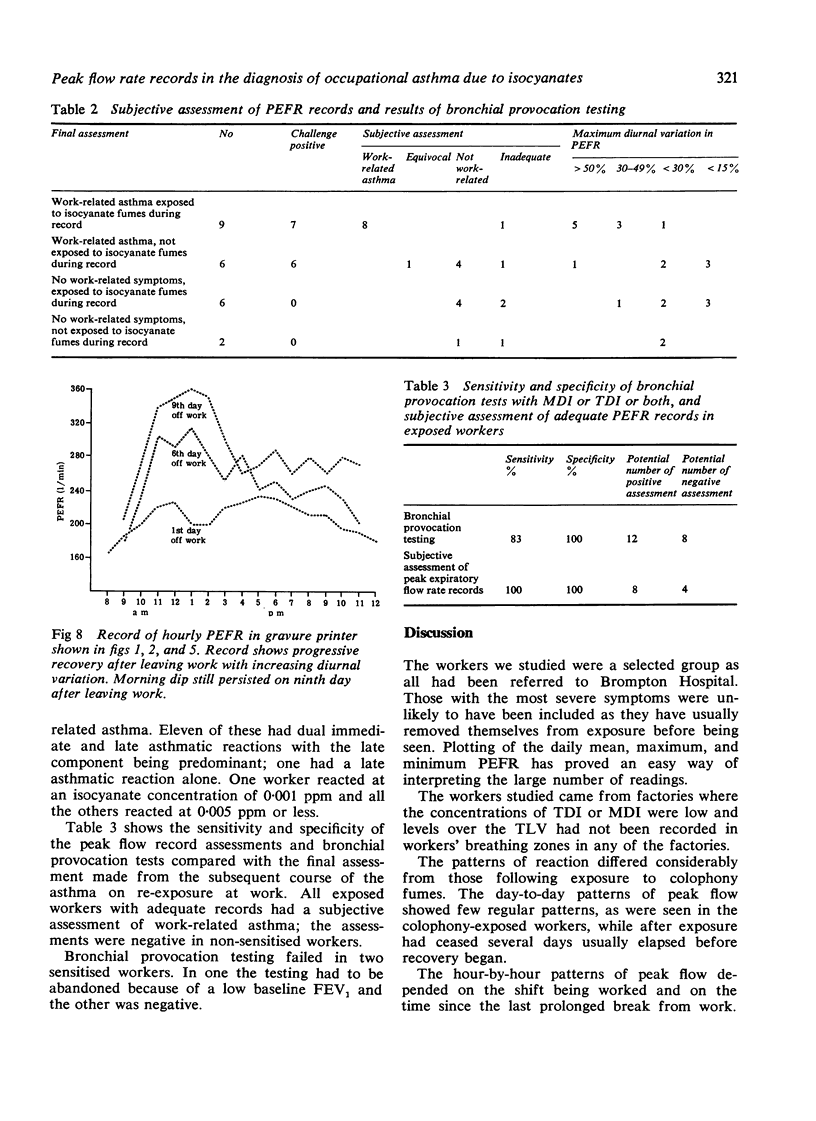
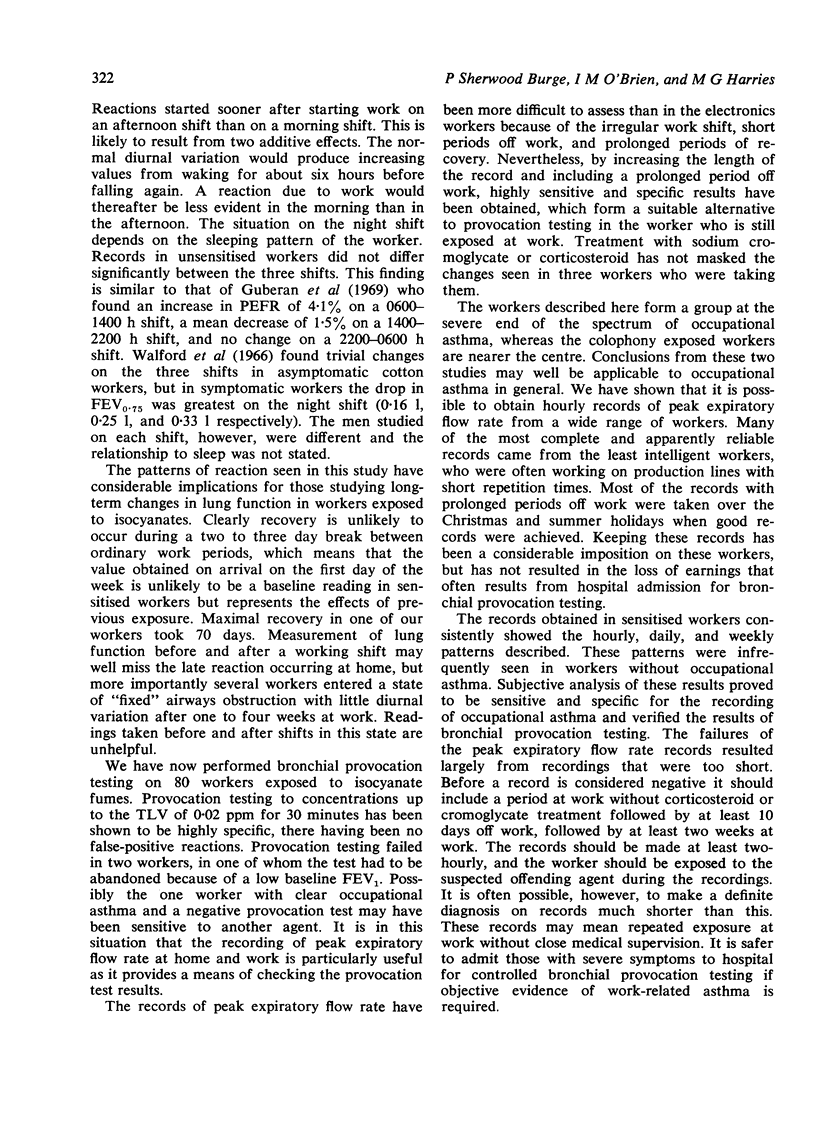
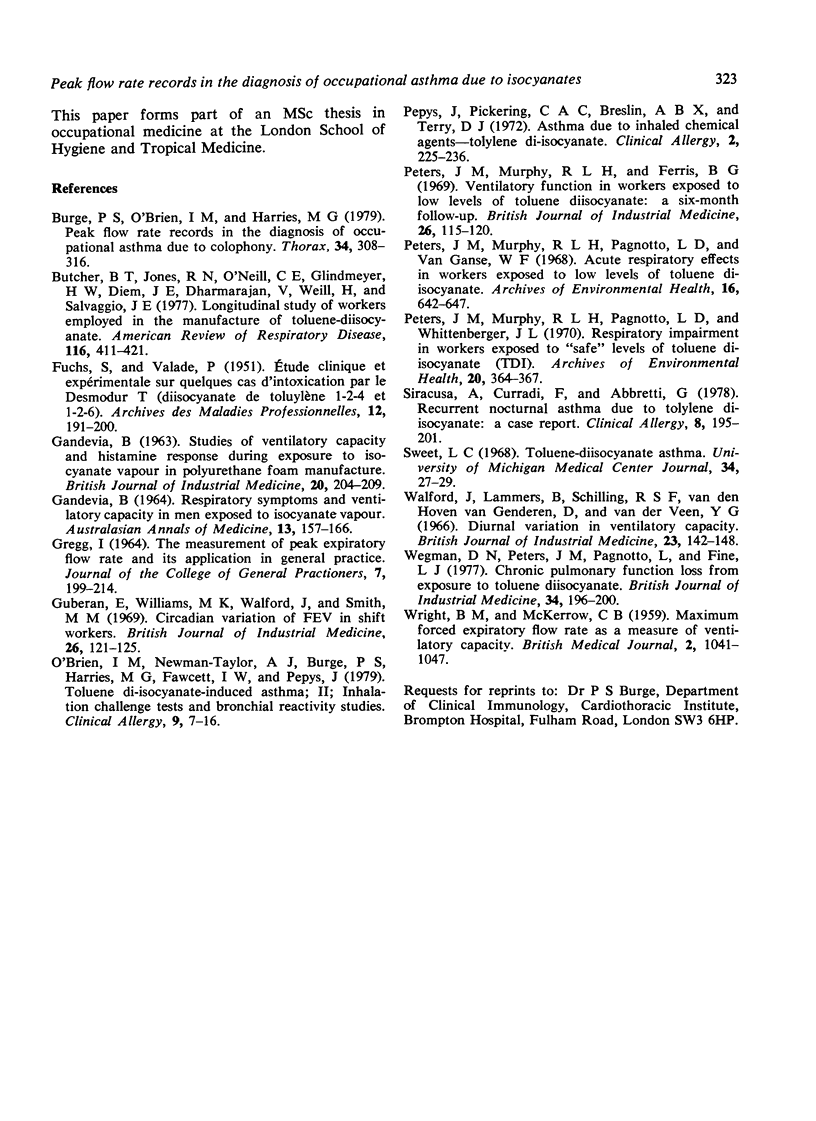
Selected References
These references are in PubMed. This may not be the complete list of references from this article.
- Burge P. S., O'Brien I. M., Harries M. G. Peak flow rate records in the diagnosis of occupational asthma due to colophony. Thorax. 1979 Jun;34(3):308–316. doi: 10.1136/thx.34.3.308. [DOI] [PMC free article] [PubMed] [Google Scholar]
- Butcher B. T., Jones R. N., O'Neil C. E., Glindmeyer H. W., Diem J. E., Dharmarajan V., Weill H., Salvaggio J. E. Longitudinal study of workers employed in the manufacture of toluene-diisocyanate. Am Rev Respir Dis. 1977 Sep;116(3):411–421. doi: 10.1164/arrd.1977.116.3.411. [DOI] [PubMed] [Google Scholar]
- FUCHS S., VALADE P. Etude clinique et expérimentale sur quelques cas d'intoxication par le desmodur T (diisocyanate de toluylène 1-2-4 et 1-2-6). Arch Mal Prof. 1951;12(2):191–196. [PubMed] [Google Scholar]
- GANDEVIA B. RESPIRATORY SYMPTOMS AND VENTILATORY CAPACITY IN MEN EXPOSED TO ISOCYANATE VAPOUR. Australas Ann Med. 1964 May;13:157–166. doi: 10.1111/imj.1964.13.2.157. [DOI] [PubMed] [Google Scholar]
- GANDEVIA B. STUDIES OF VENTILATORY CAPACITY AND HISTAMINE RESPONSE DURING EXPOSURE TO ISOCYANATE VAPOUR IN POLYURETHANE FOAM MANUFACTURE. Br J Ind Med. 1963 Jul;20:204–209. doi: 10.1136/oem.20.3.204. [DOI] [PMC free article] [PubMed] [Google Scholar]
- GREGG I. THE MEASUREMENT OF PEAK EXPIRATORY FLOW RATE AND ITS APPLICATION IN GENERAL PRACTICE. J Coll Gen Pract. 1964 Mar;7:199–214. [PMC free article] [PubMed] [Google Scholar]
- Guberan E., Williams M. K., Walford J., Smith M. M. Circadian variation of F.E.V. in shift workers. Br J Ind Med. 1969 Apr;26(2):121–125. doi: 10.1136/oem.26.2.121. [DOI] [PMC free article] [PubMed] [Google Scholar]
- O'Brien I. M., Newman-Taylor A. J., Burge P. S., Harries M. G., Fawcett I. W., Pepys J. Toluene di-isocyanate-induced asthma. II. Inhalation challenge tests and bronchial reactivity studies. Clin Allergy. 1979 Jan;9(1):7–15. doi: 10.1111/j.1365-2222.1979.tb01517.x. [DOI] [PubMed] [Google Scholar]
- Pepys J., Pickering C. A., Breslin A. B., Terry D. J. Asthma due to inhaled chemical agents, tolylene di-isocyanate. Clin Allergy. 1972 Sep;2(3):225–236. doi: 10.1111/j.1365-2222.1972.tb01287.x. [DOI] [PubMed] [Google Scholar]
- Peters J. M., Murphy R. L., Ferris B. G., Jr Ventilatory function in workers exposed to low levels of toluene diisocyanate: a six-month follow-up. Br J Ind Med. 1969 Apr;26(2):115–120. doi: 10.1136/oem.26.2.115. [DOI] [PMC free article] [PubMed] [Google Scholar]
- Peters J. M., Murphy R. L., Pagnotto L. D., Van Ganse W. F. Acute respiratory effects in workers exposed to low levels of toluene diisocyanate (TDI). Arch Environ Health. 1968 May;16(5):642–647. doi: 10.1080/00039896.1968.10665121. [DOI] [PubMed] [Google Scholar]
- Peters J. M., Murphy R. L., Pagnotto L. D., Whittenberger J. L. Respiratory impairment in workers exposed to "safe" levels of toluene diisocyanate (TDI). Arch Environ Health. 1970 Mar;20(3):364–367. doi: 10.1080/00039896.1970.10665605. [DOI] [PubMed] [Google Scholar]
- Siracusa A., Curradi F., Abbritti G. Recurrent nocturnal asthma due to tolylene di-isocyanate: a case report. Clin Allergy. 1978 Mar;8(2):195–201. doi: 10.1111/j.1365-2222.1978.tb00464.x. [DOI] [PubMed] [Google Scholar]
- Sweet L. C. Toluene-diisocyanate asthma. Univ Mich Med Cent J. 1968 Jan-Feb;34(1):27–29. [PubMed] [Google Scholar]
- WRIGHT B. M., McKERROW C. B. Maximum forced expiratory flow rate as a measure of ventilatory capacity: with a description of a new portable instrument for measuring it. Br Med J. 1959 Nov 21;2(5159):1041–1046. doi: 10.1136/bmj.2.5159.1041. [DOI] [PMC free article] [PubMed] [Google Scholar]
- Walford J., Lammers B., Schilling R. S., Hoven van Genderen D., van der Veen Y. G. Diurnal variation in ventilatory capacity. An epidemiological study of cotton and other factory workers employed on shift work. Br J Ind Med. 1966 Apr;23(2):142–148. doi: 10.1136/oem.23.2.142. [DOI] [PMC free article] [PubMed] [Google Scholar]
- Wegman D. H., Peters J. M., Pagnotto L., Fine L. J. Chronic pulmonary function loss from exposure to toluene diisocyanate. Br J Ind Med. 1977 Aug;34(3):196–200. doi: 10.1136/oem.34.3.196. [DOI] [PMC free article] [PubMed] [Google Scholar]


